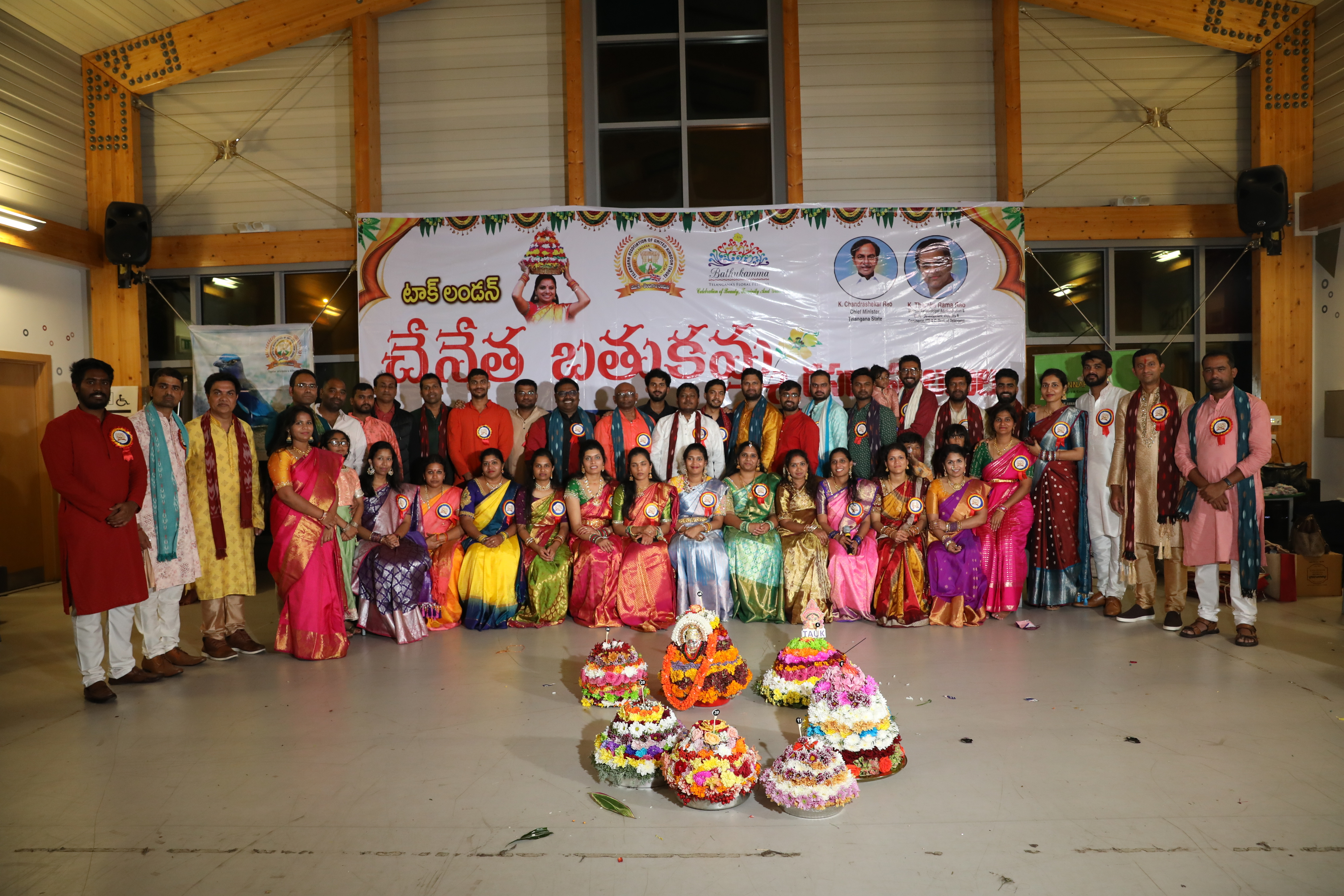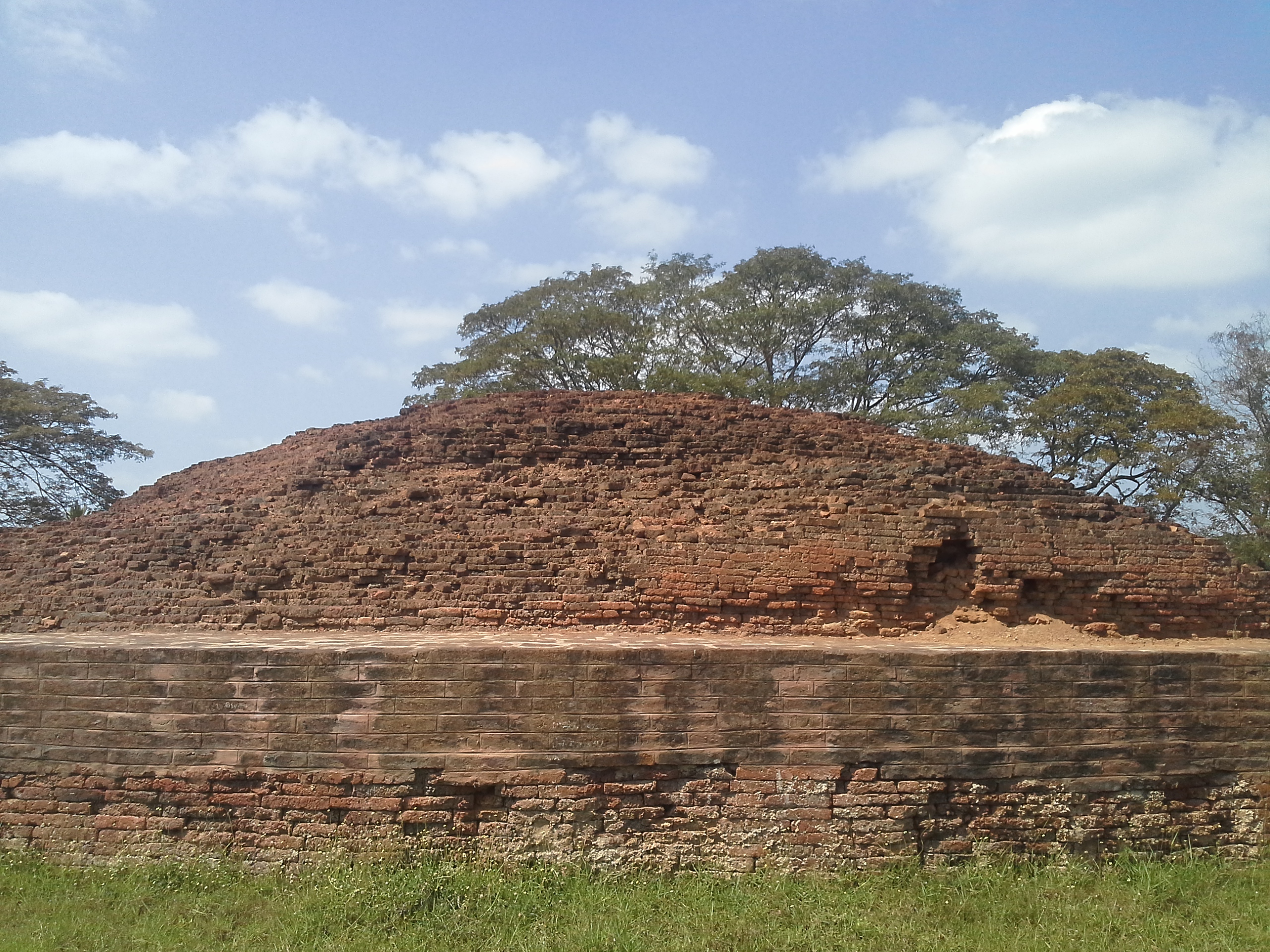|
Bathukamma
Bathukamma is a hindu flower-festival celebrated by the women of Telangana and some parts of Andhra Pradesh. Every year this festival is celebrated as per the Sathavahana calendar for nine days starting on Pitru Amavasya, which usually coincides with the months September–October of the Gregorian calendar. Bathukamma is celebrated for nine days and corresponds to the festivals of Sharad Navratri and Durga Puja. It starts on the day of Mahalaya Amavasya and the 9-day festivities culminate on "Saddula Bathukamma" or "Pedda Bathukamma." Bathukamma is followed by ''Boddemma'', which is a 7-day festival. The Boddemma festival that marks the ending of Varsha Ruthu whereas Bathukamma marks the beginning of Sarad or Sharath Ruthu. In Telugu, ‘Bathukamma' means ‘Mother Goddess come Alive’. Bathukamma is a beautiful flower stack, arranged with different unique seasonal flowers most of them with medicinal values, in seven concentric layers in the shape of a temple gopuram. It is ... [...More Info...] [...Related Items...] OR: [Wikipedia] [Google] [Baidu] |
Navaratri
Navaratri () is an annual Hindu festival observed in honor of the goddess Durga, an aspect of Adi Parashakti, the supreme goddess. It spans over nine nights, first in the month of Chaitra (March/April of the Gregorian calendar), and again in the month of Ashvin (September–October). It is observed for different reasons and celebrated differently in various parts of the Hindu Indian cultural sphere. Theoretically, there are four seasonal ''Navaratris''. However, in practice, it is the post-monsoon autumn festival called Sharada Navaratri. There are 2 Gupta Navaratris or "Secret Navaratris" as well, one starting on the Shukla Paksha Pratipada of the Magha Month (Magha Gupta Navaratri) and another starting in the Shukla Paksha Pratipada of Ashadha Month. Etymology and nomenclature The word ''Navarātram'' means "a period of nine nights" in Sanskrit, ''nava'' meaning "nine" and ''ratri'' meaning "night". Dates and celebrations In the eastern and northeastern states of ... [...More Info...] [...Related Items...] OR: [Wikipedia] [Google] [Baidu] |
Telangana
Telangana is a States and union territories of India, state in India situated in the Southern India, south-central part of the Indian subcontinent on the high Deccan Plateau. It is the List of states and union territories of India by area, eleventh largest state by area and the List of states and union territories of India by population, twelfth most populated state in India, according to the 2011 Census of India, 2011 census. On 2 June 2014, the area was separated from the northwestern part of United Andhra Pradesh as the newly formed States and union territories of India, state of Telangana, with Hyderabad as its capital. Telugu language, Telugu, one of the classical languages of India, is the most widely spoken and the primary official language of Telangana state, whereas Urdu is recognised as the second official language. Additionally, several tribal languages such as Gondi, Kolami, Koya and Lambadi are spoken in different regions of the Telangana state. The economy of ... [...More Info...] [...Related Items...] OR: [Wikipedia] [Google] [Baidu] |
Parvati
Parvati (, , IPA: /Sanskrit phonology, pɑɾʋət̪iː/), also known as Uma (, , IPA: Sanskrit phonology, /ʊmɑː/) and Gauri (, , IPA: /Sanskrit phonology, gə͡ʊɾiː/), is one of the principal goddesses in Hinduism, revered as the Devi, goddess of power, energy, nourishment, harmony, love, beauty, devotion, and motherhood. Along with Lakshmi and Saraswati, Sarasvati, she forms the trinity, known as the Tridevi. From her first appearance as a goddess during the Itihasa-Purana, epic period (400 BCE – 400 CE), Parvati is primarily depicted as the consort of the god Shiva. According to various Puranas, Parvati is the reincarnation of Sati (Hindu goddess), Sati, Shiva's first wife, who relinquished her body to sever familial ties with her father, Daksha, after he had insulted Shiva. Parvati is often equated with the other goddesses such as Sati, Uma, Kali and Durga and due to this close connection, they are often treated as one and the same, with their stories frequently ove ... [...More Info...] [...Related Items...] OR: [Wikipedia] [Google] [Baidu] |
Durga Puja
Durga Puja (ISO 15919, ISO: , ), also known as Durgotsava or Shaaradotsava, is an annual festival originating in the Indian subcontinent which pays homage to the Hinduism, Hindu goddess Durga, and is also celebrated because of Durga's victory over Mahishasura. It is the biggest festival of Bengali Hindus and the Indian state of West Bengal. Durga Puja in Kolkata, Durga Puja as celebrated in Kolkata, West Bengal's capital city, was inscribed on the UNESCO Intangible Cultural Heritage Lists, intangible cultural heritage list of UNESCO in December 2021. In addition to West Bengal, Hindu Bengalis are native to Bangladesh and Indian state of Tripura, Barak Valley, Assam (Barak Valley), Jharkhand and Kosi-Seemanchal, Bihar (Kosi-Seemanchal); Therefore, Durga Puja is performed with great devotion in these places as well. The festival is observed in the Indian calendar in the month of Ashwin, Ashvin, which corresponds to September–October in the Gregorian calendar. Durga Puja is ... [...More Info...] [...Related Items...] OR: [Wikipedia] [Google] [Baidu] |
Vemulawada, Rajanna Sircilla District
Vemulawada is an ancient historical and a famous pilgrimage census town in Rajanna Sircilla district of the Indian state of Telangana. It is the headquarters of Vemulawada Mandal and Revenue Division. The place is notable for Sri Raja Rajeshwara Swamy temple,which is also known as “ Dakshina kashi” constructed between 760 and 973 CE, and a site of pilgrimage for Hindu worshipers. It also has ancient temples of Bheemeshwara, Nagareshwara and Pochamma nearby the main temple of Sri Raja Rajeshwara Swamy. It was the capital of Vemulawada Chalukyas, that ruled present day Telangana, parts of Andhra Pradesh, Karnataka and Maharashtra between 7 and 10 century CE. The town attracts large number of pilgrims from South India as well as Maharashtra, Odisha and Chhattisgarh. Huge number of devotees throng the place during Maha Shivaratri and Sri Rama Navami. The famous floral festival of Telangana, Bathukamma is believed to have originated from this place. Transport State Highway 11 ... [...More Info...] [...Related Items...] OR: [Wikipedia] [Google] [Baidu] |
Shaka Era
The Shaka era (IAST: Śaka, Śāka) is a historical Hindu calendar era (year numbering), the epoch (its year zero) of which corresponds to Julian year (calendar), Julian year 78. The era has been widely used in different regions of the Indian subcontinent as well as in Southeast Asia. According to the Government of India, it is referred as the Shalivahana Era (IAST: Śālivāhana). History The origin of the Shaka era is highly controversial. There are two Shaka era systems in scholarly use, one is called ''Old Shaka Era'', whose epoch is uncertain, probably sometime in the 1st millennium BCE because ancient Buddhist and Jaina inscriptions and texts use it, but this is a subject of dispute among scholars. The other is called ''Saka Era of 78 CE'', or simply ''Saka Era'', a system that is common in epigraphic evidence from southern India. A parallel northern India system is the ''Vikrama Era'', which is used by the Vikrami calendar linked to Vikramaditya. The beginning of the S ... [...More Info...] [...Related Items...] OR: [Wikipedia] [Google] [Baidu] |
Satyashraya
Satyashraya (; ), also known as Sattiga or Irivabedanga, was a king of the Western Chalukya Empire. During a time of consolidation of the empire in the early 11th century, Satyashraya was involved in several battles with the Chola dynasty of Thanjavur, the Paramara dynasty and Chedi Kingdom of central India, and the Chaulukyas of Gujarat. The results of these wars were mixed, with victories and defeats.Kamath (1980). p.101 Even as a prince, during the rule of his father Tailapa II, Satyashraya had established himself as an ambitious warrior.Sastri(1955), p.164 Satyashraya patronised the great Kannada poet Ranna (one among the "three gems" or ''ratnatraya'' of classical Kannada literature) who compared his patron favourably to the Pandava prince Bhima (of the epic Mahabharatha) for his strength and valor in his epic poem ''Sahasabhimavijaya'' (''lit'', "Daring Bhima", the epic also known as ''Gadayuddha'').Narasimhacharya (1988), p.18Sastri (1955), p.356Kamath (1980) p.101 Sa ... [...More Info...] [...Related Items...] OR: [Wikipedia] [Google] [Baidu] |
Andhra Pradesh
Andhra Pradesh (ISO 15919, ISO: , , AP) is a States and union territories of India, state on the East Coast of India, east coast of southern India. It is the List of states and union territories of India by area, seventh-largest state and the List of states and union territories of India by population, tenth-most populous in the country. Telugu language, Telugu is the most widely spoken language in the state, as well as its official language. Amaravati is the state capital, while the largest city is Visakhapatnam. Andhra Pradesh shares borders with Odisha to the northeast, Chhattisgarh to the north, Karnataka to the southwest, Tamil Nadu to the south, Telangana to northwest and the Bay of Bengal to the east. It has the Coastline of Andhra Pradesh, third-longest coastline in India at about . Archaeological evidence indicates that Andhra Pradesh has been continuously inhabited for over 247,000 years, from early archaic Hominini, hominins to Neolithic settlements. The earliest r ... [...More Info...] [...Related Items...] OR: [Wikipedia] [Google] [Baidu] |
Celosia
''Celosia'' ( ) is a small genus of edible and ornamental plants in the amaranth family, Amaranthaceae. Its species are commonly known as woolflowers, or, if the flower heads are crested by fasciation, cockscombs. The plants are well known in East Africa's highlands and are used under their Swahili name, . Taxonomy The generic name is derived from the Ancient Greek word (), meaning "burning", and refers to the colourful flame-like flower heads. Uses As a garden plant The plant is an annual. Seed production in these species can be very high, 200–700 kg per hectare. One ounce of seed may contain up to 43,000 seeds. One thousand seeds can weigh 1.0–1.2 grams. Depending upon the location and fertility of the soil, blossoms can last 8–10 weeks. '' C. argentea'' and '' C. cristata'' are common garden ornamental plants. As food '' Celosia argentea'' var. ''argentea'' or Lagos spinach (a.k.a. quail grass, soko, celosia, feather cockscomb) is a broadleaf annual ... [...More Info...] [...Related Items...] OR: [Wikipedia] [Google] [Baidu] |
Memecylon Edule
''Memecylon edule'' is a small evergreen tree native to India especially the Deccan Plateau including most of Karnataka, Andhra Pradesh and parts of Tamil Nadu, Thailand, Malay Peninsula, Singapore and Borneo. It is found in shores with sand or rocky soils. Common names include kaayam, delek bangas, delek air, nipis kulit ("thin-skinned" in Malay), miat, and nemaaru. Description Tree The tree is small and grows between 3–7 metres tall; it has a thin, greyish brown bark. The leaves are ovate 3–7 centimetres long, each of its surface is very thick and leathery that the veins are hard to see. Flowers and fruit The tree blooms once or twice per year. These flowers are arranged in a spiky, spherical inflorescence that people compare to the shape of a coronavirus. Each blossom is a regular hermaphrodite with petals as many as calyx lobes inserted on the mouth of its limb, its stamens are shorter in the alternate and may be seriate. As the flower petals are shed, the sand ... [...More Info...] [...Related Items...] OR: [Wikipedia] [Google] [Baidu] |





